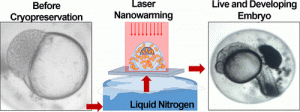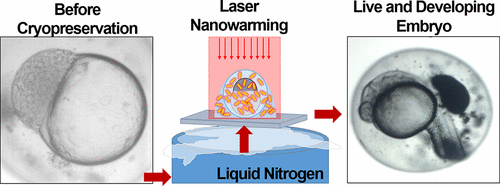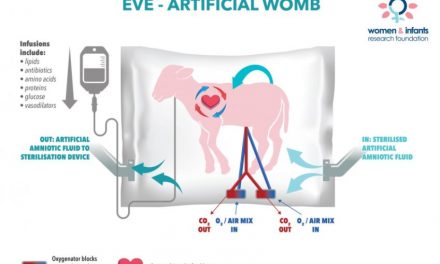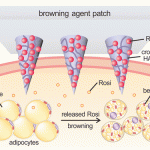
Credit: American Chemical Society, University of Minnesota & the Smithsonian Conservation Biology Institute (SCBI)
A new advancement has been announced that could have large implications for the preserving and conservation of a large group of species that are endanger of extinction. Cryopreservation, is a process of freezing to preserve structurally intact living cells and tissues. It has been used to preserve sperm, gametocytes and certain embryos of many species, including humans and some animals. However it has remained an elusive goal, in preserving the embryos of most fishes, and other related species until now. Scientists from the University of Minnesota and the Smithsonian report they have successfully deep frozen and reanimated zebrafish embryos by injecting a cryoprotectant (more details in video below).
In the paper published in the journal ACS Nano, the team outlined the approach using liquid nitrogen as a cryoprotectant along with injecting plasmonic gold nanoparticles to act as a laser absorber, directly into zebrafish embryos. According to the study paper results the liquid nitrogen rapidly cooled the embryos to a cryogenically stable state in less than a second. Laser irradiation was then used to heat up the evenly distributed nanoparticles, inside the embryos, at a high speed rate . Of those embryos that were successfully revived (a first in itself) hearts, eyes and nervous systems developed during the next 28 hours, and the new hatchlings started to wiggle. The team hopes this new cryopreservation method could help replenish our planets’ biodiversity some day. The technique is believed to be applicable for other fish species as well as reptiles, amphibians and bird species with comparable embryonic sizes and structures.










